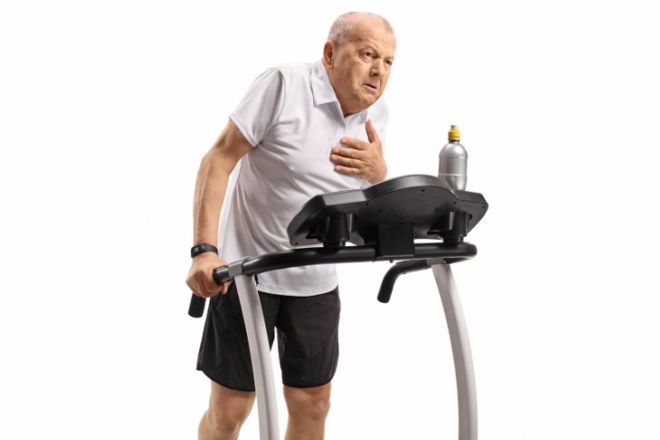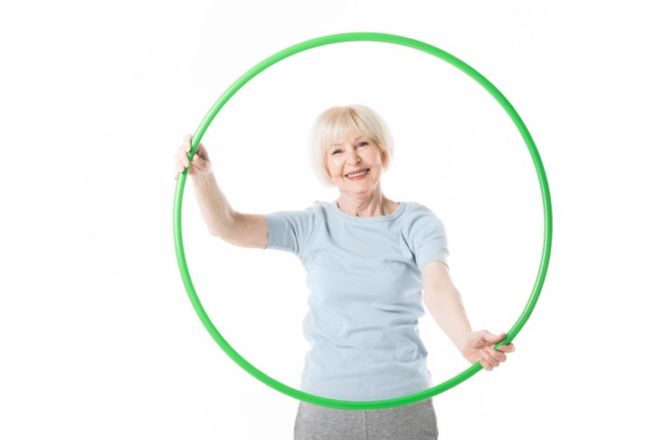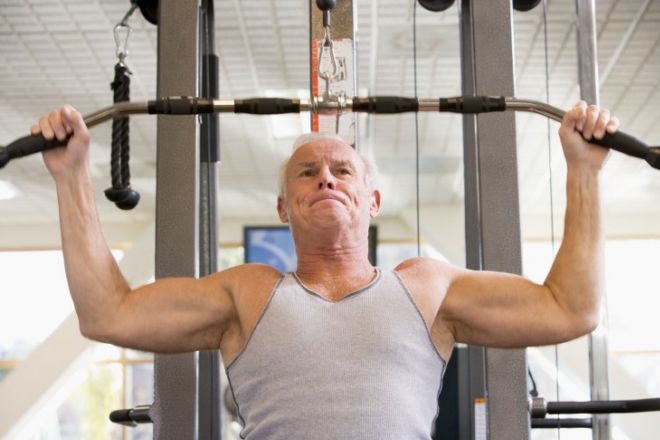Once you’re in your fifties, choosing to work out in the same way you did in your twenties is quite simply a recipe for disaster! Changes in muscular strength, flexibility, bone density and recovery time make injuries way more likely if you don’t alter your program to match your age. Below, we’ve listed the most dangerous exercises for an over-50 to perform. Take a look:

1. Leg extension machine
Using a leg extension machine consists of extending your legs out before you with resistance in front of your ankles, while sitting down, and its primary targets are the quadriceps in front of the thighs. According to Benjamin Butts, director of rehabilitation services and performance therapy at Providence Saint John’s Health Center in Santa Monica, California, “this exercise puts an unnecessary stress over the kneecap area, causing wear and tear.” Experts recommend performing multidirectional (forward and side) lunges or squats instead.
2. Overhead presses
Lifting weights straight over your head, like in a dumbbell press or military press (both shoulder exercises) places a lot of stress on your shoulders and rotator cuff tendons. Since rotator cuff injuries most frequently happen after age 60, we’d recommend performing lateral shoulder raises or front raises instead of overhead presses.

3. Heavy weights
Lifting heavy may give you bragging rights when you’re younger, but it loses its relevance as you age, according to Tom Holland, exercise physiologist and author of ‘Beat the Gym.’ “There’s no reason to go super heavy and be able to get only four to six repetitions,” he says. For the greatest strength benefits within a safe range, aim for a weight where you can get 10 reps, where the last couple reps are challenging, Holland says.
4. Back extension on a Roman chair
The Roman chair back-strengthening exercise will require you to bend forward from the waist with your thighs supported, where you will then need to use your lower back muscles to get back up. “This move can cause issues for you if you have lumbar (lower back) instability or stenosis,” according to Butts. Professionals recommend carrying out planks and quadrupeds for core strength as an alternative.

5. Pull-ups or pull-downs behind the head
These tough exercises primarily work on the biceps as well as the back and involve pulling a bar down behind your head. However, people over 50 should exercise a high degree of caution before carrying them out. This is because, according to Butts, “they put an unnecessary amount of stress on the front of your shoulder, leading to potential shoulder injuries.” To ensure you remain safe, simply do the same exercises in front of your head instead.
6. Plyometric exercises
Plyometrics exercises involve explosive movements such as box jumps and depth jumps. “They are great exercises for adding strength and explosive power,” says Dr. Luga Podesta, sports medicine physician at Kerlan-Jobe Orthopaedic Clinic in Los Angeles, Calif. “However, they can be dangerous if they’re not performed correctly or if the person does not have enough base muscle strength to perform the exercises. They place tremendous stress across the body parts and joints.” If you really want to practice plyometrics after age 50, then only do so under the close guidance of a trainer experienced in plyometrics and sports training.

7. Sprinting
While it’s a good idea to occasionally increase the intensity of your workouts, suddenly starting sprinting after age 50 could be a recipe for disaster. According to Holland, “some people can do a 7-minute mile after age 50, but most benefit more from a slow and steady pace.” In fact, Holland further adds that “the faster the speed, the greater the chance of pulling a muscle or developing some other lower-body injury.”

